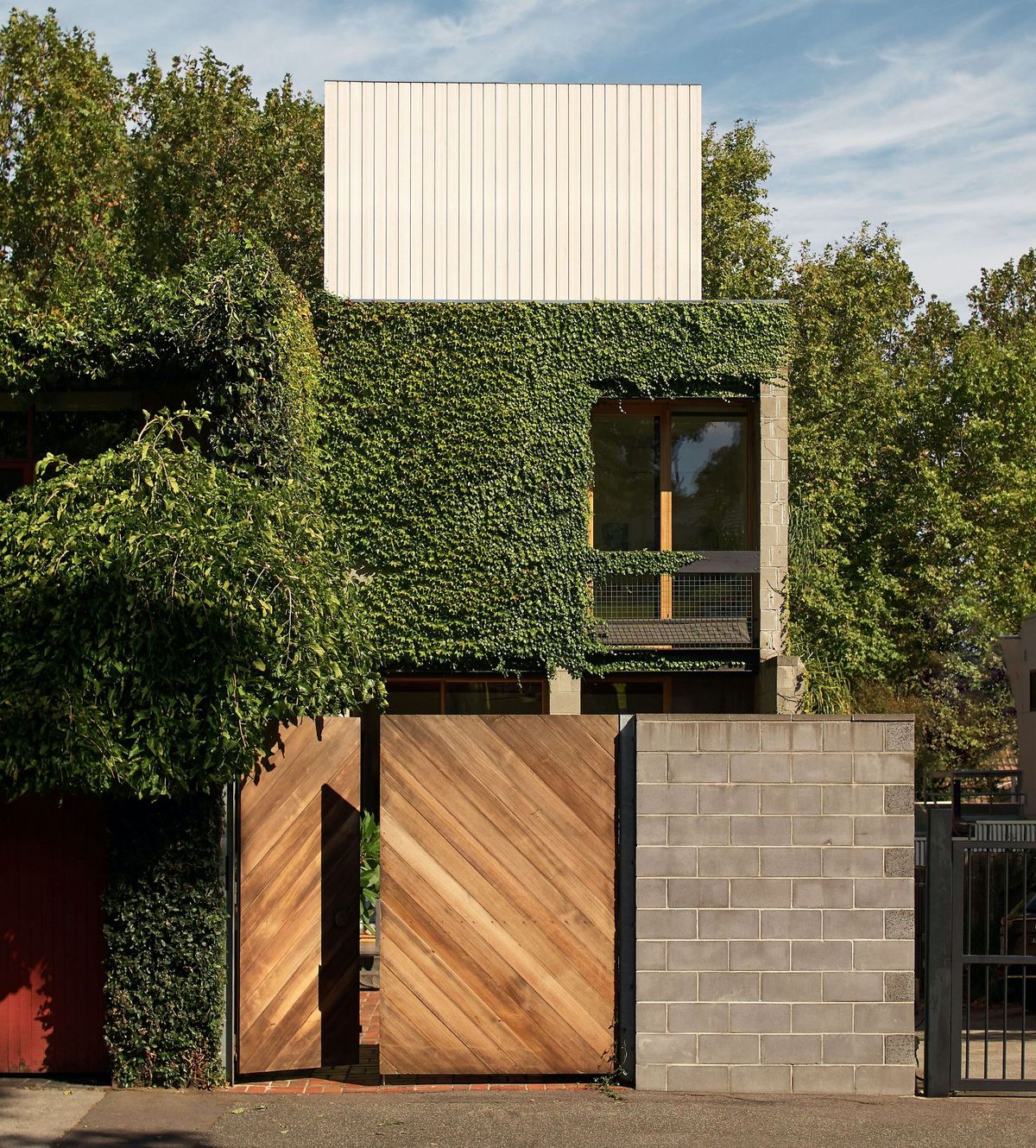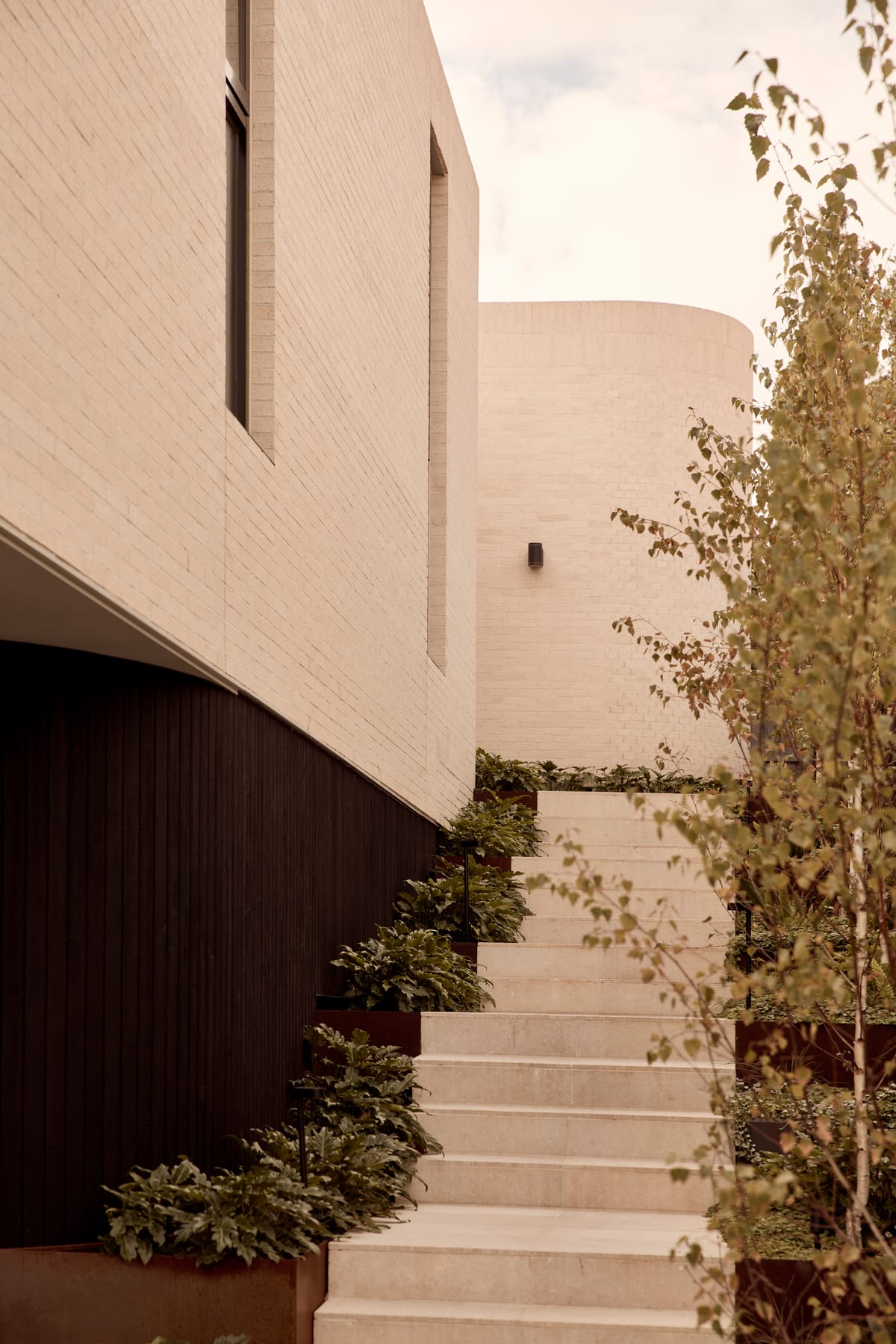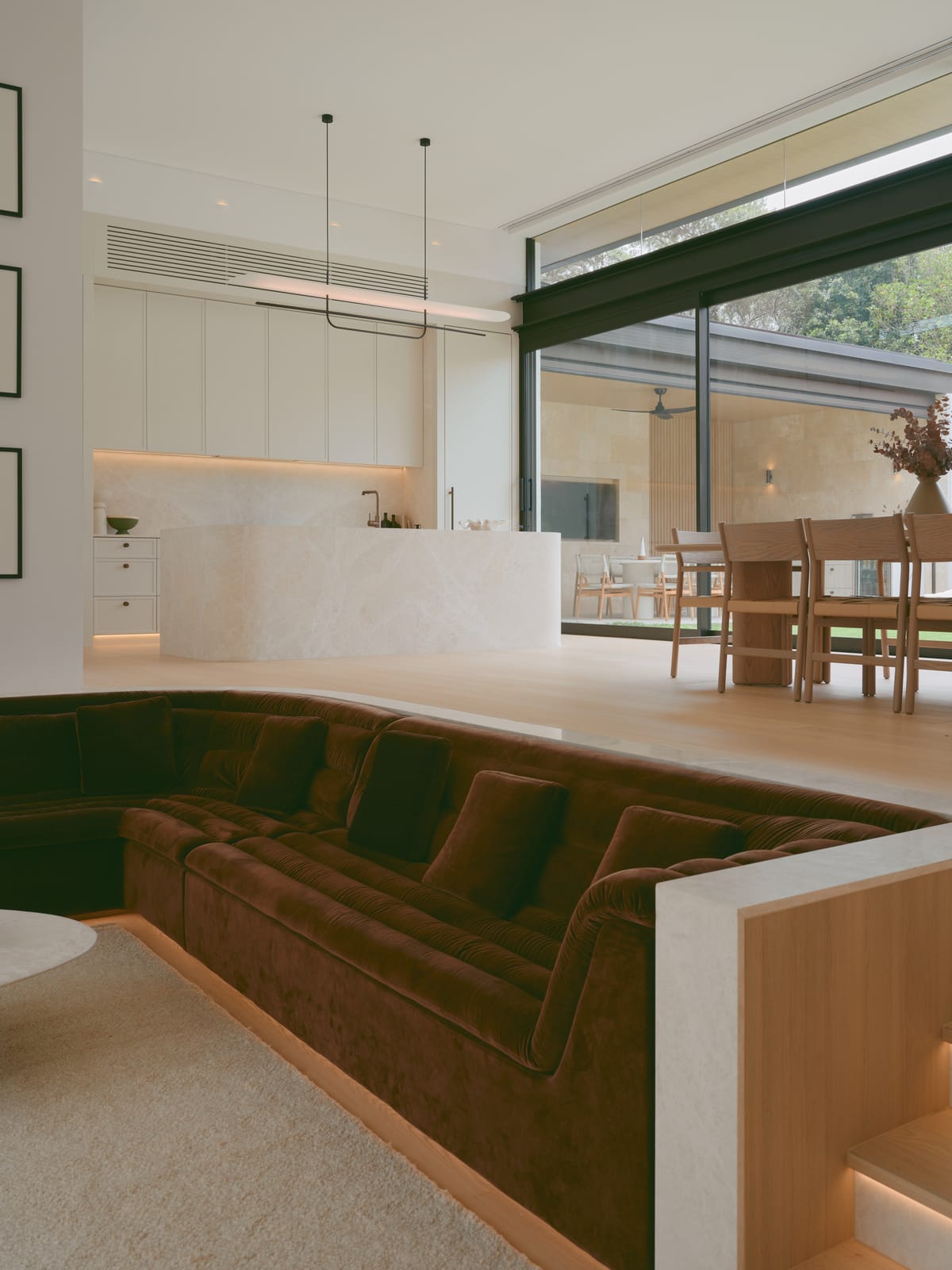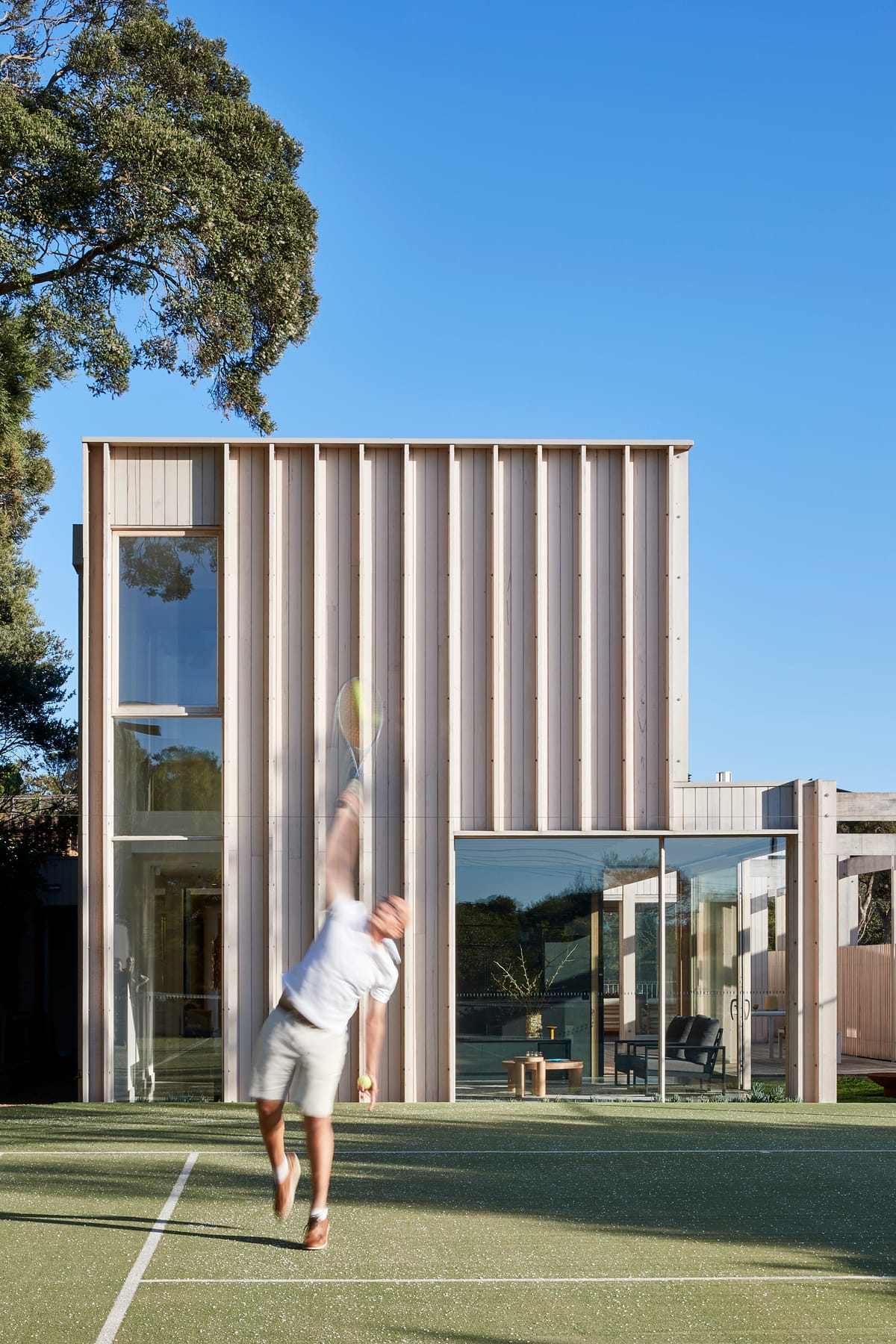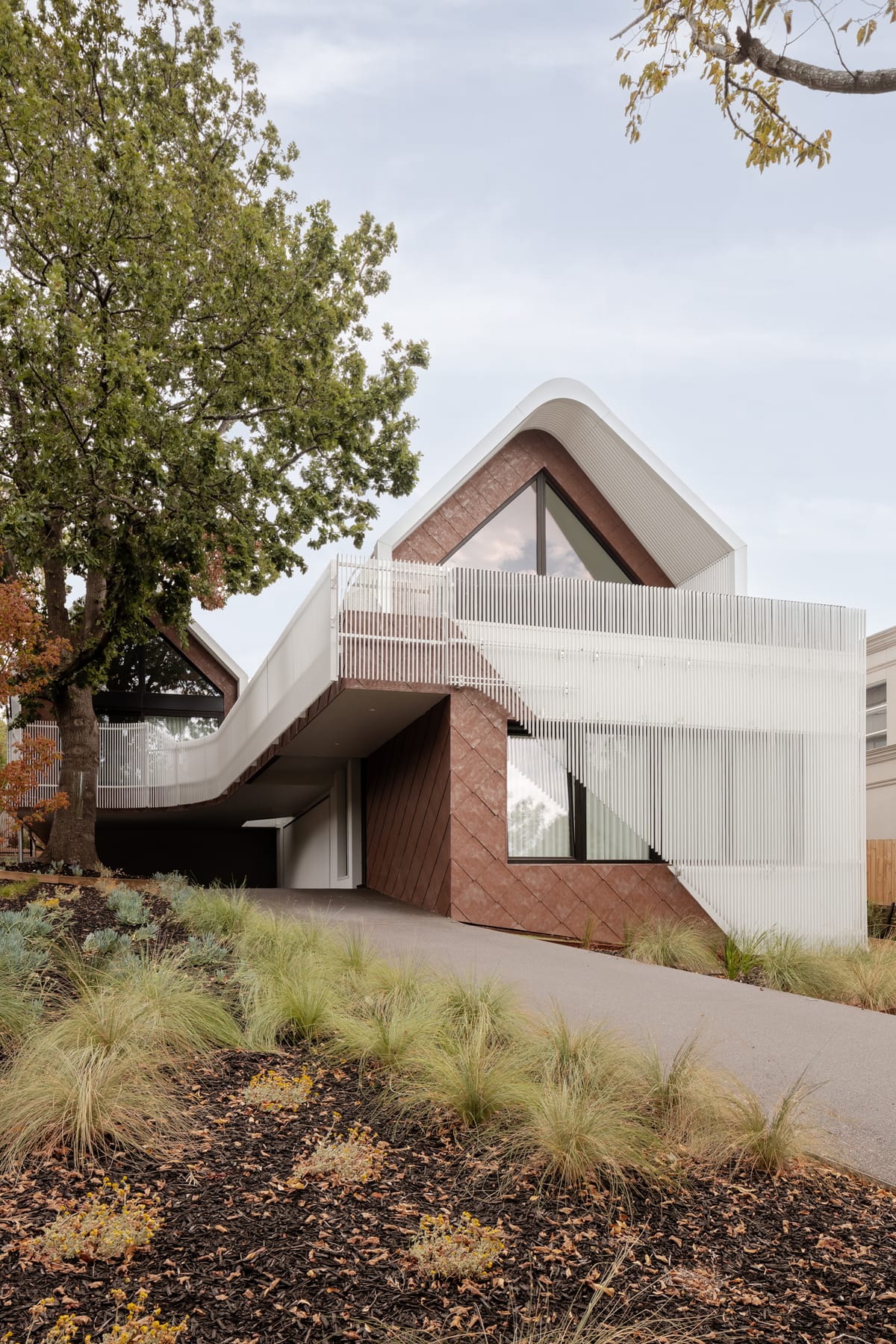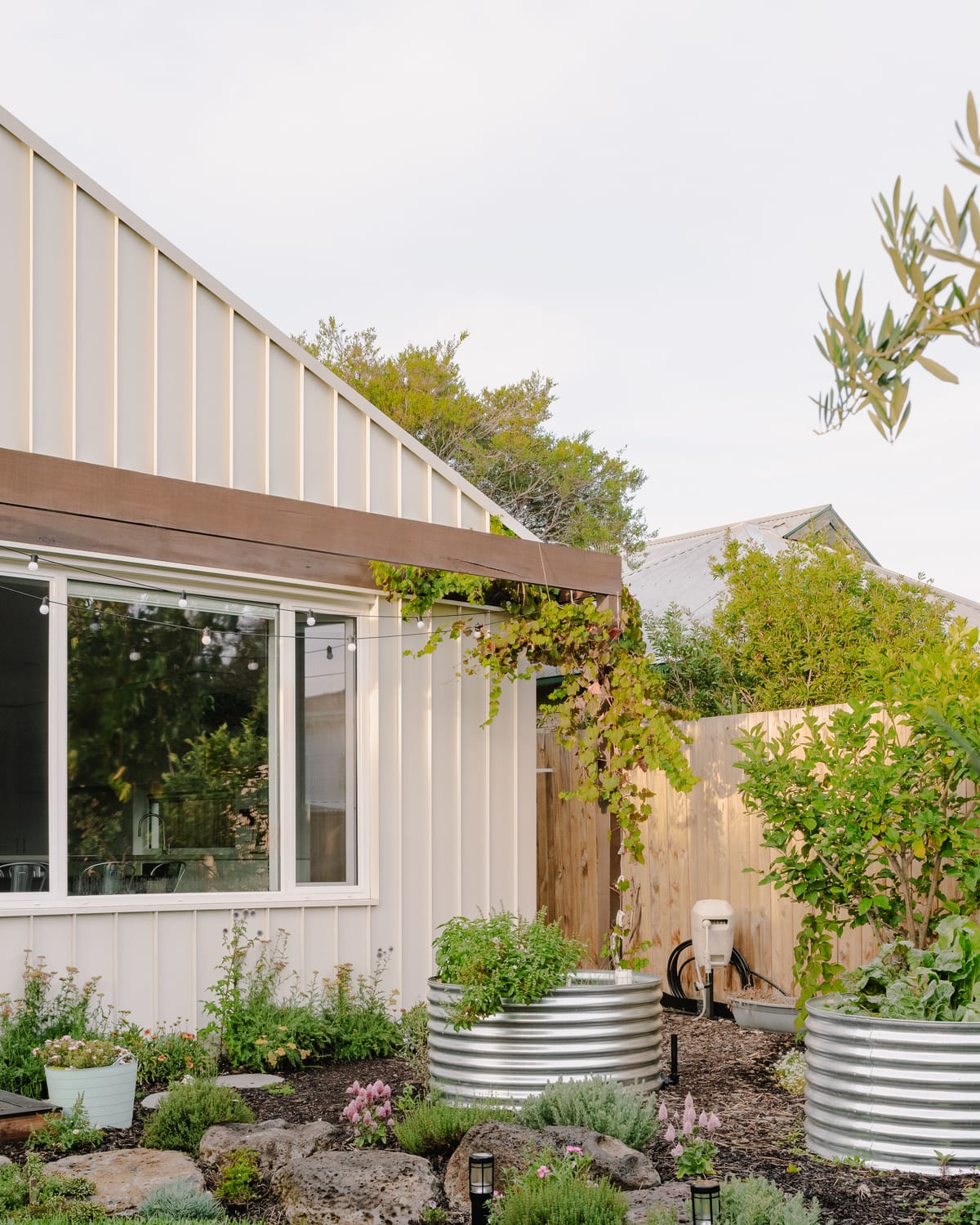Written by Sheridan O'Leary
The 1970s house has been updated to meet the needs of Jamie's growing family, while preserving its original origins. In 2013, the team at Foomann updated the fences, gardens, and interior of the house, consolidating rooms to create larger, more functional spaces. Now, with two young children, Jamie has added another level to the house, creating a third bedroom, second bathroom, and rooftop deck, allowing the family to comfortably reside in the house for the long-term.
As a student, Jamie worked for Mike Morris, a director of Morris Pirrotta Architects, who designed the original North Melbourne house in 1970. This connection to the original architecture helps to make the alterations feel collaborative, despite the half-century that has passed since the house was first built. Given the site constraints, the best way to extend the house was to build up, which has increased the floor space from 80 to 100 square meters.
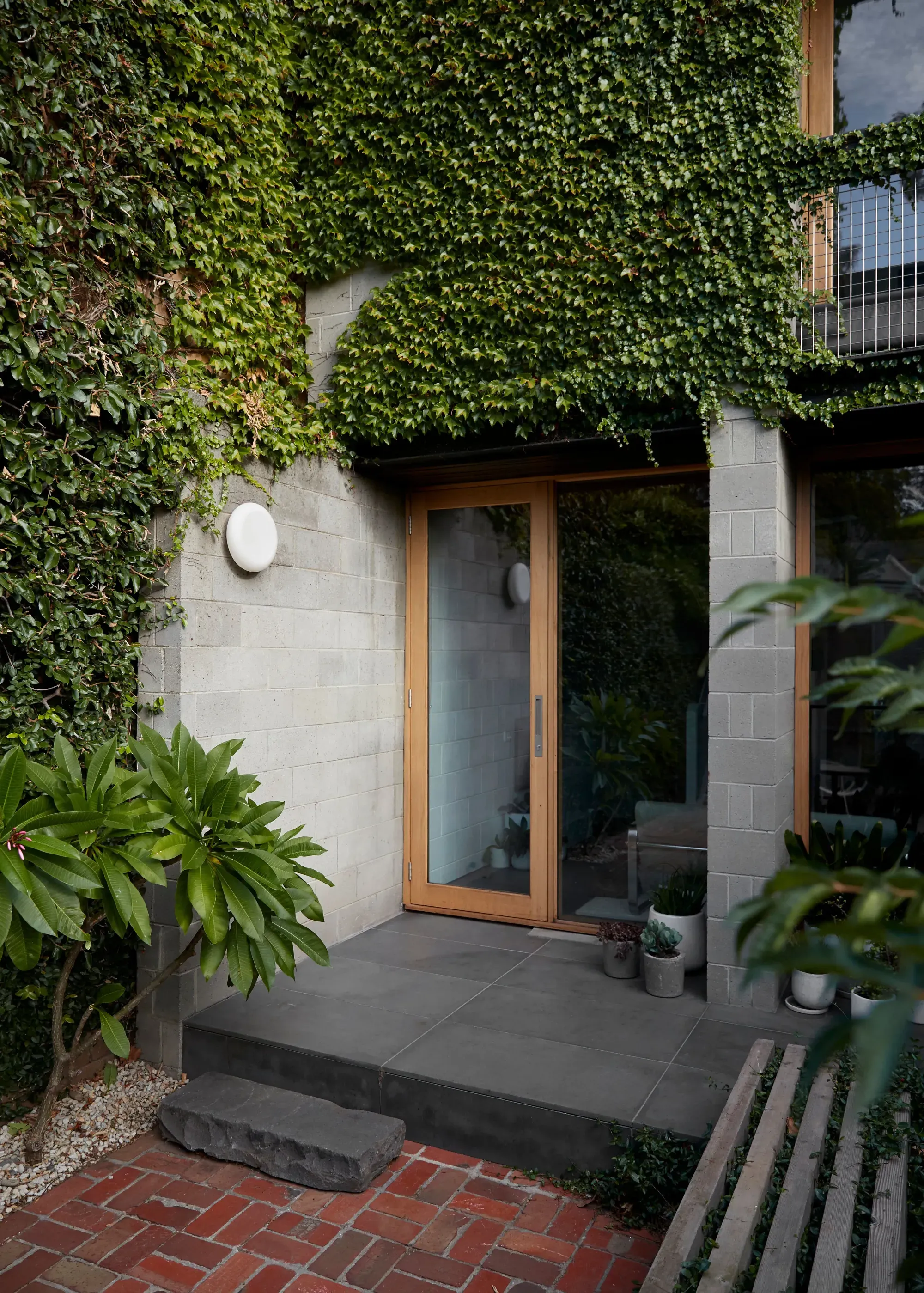
The materials used in the renovation become lighter and the design more pared back as the spaces ascends, offering a different feel and energy from the ground to the top floor.
The central circulation through the split levels facilitates a gradual transition, as does the subtle pairing and blurring of old and new materials. The renovation takes ownership of the house, but the 1970s roots provide a visible framework.
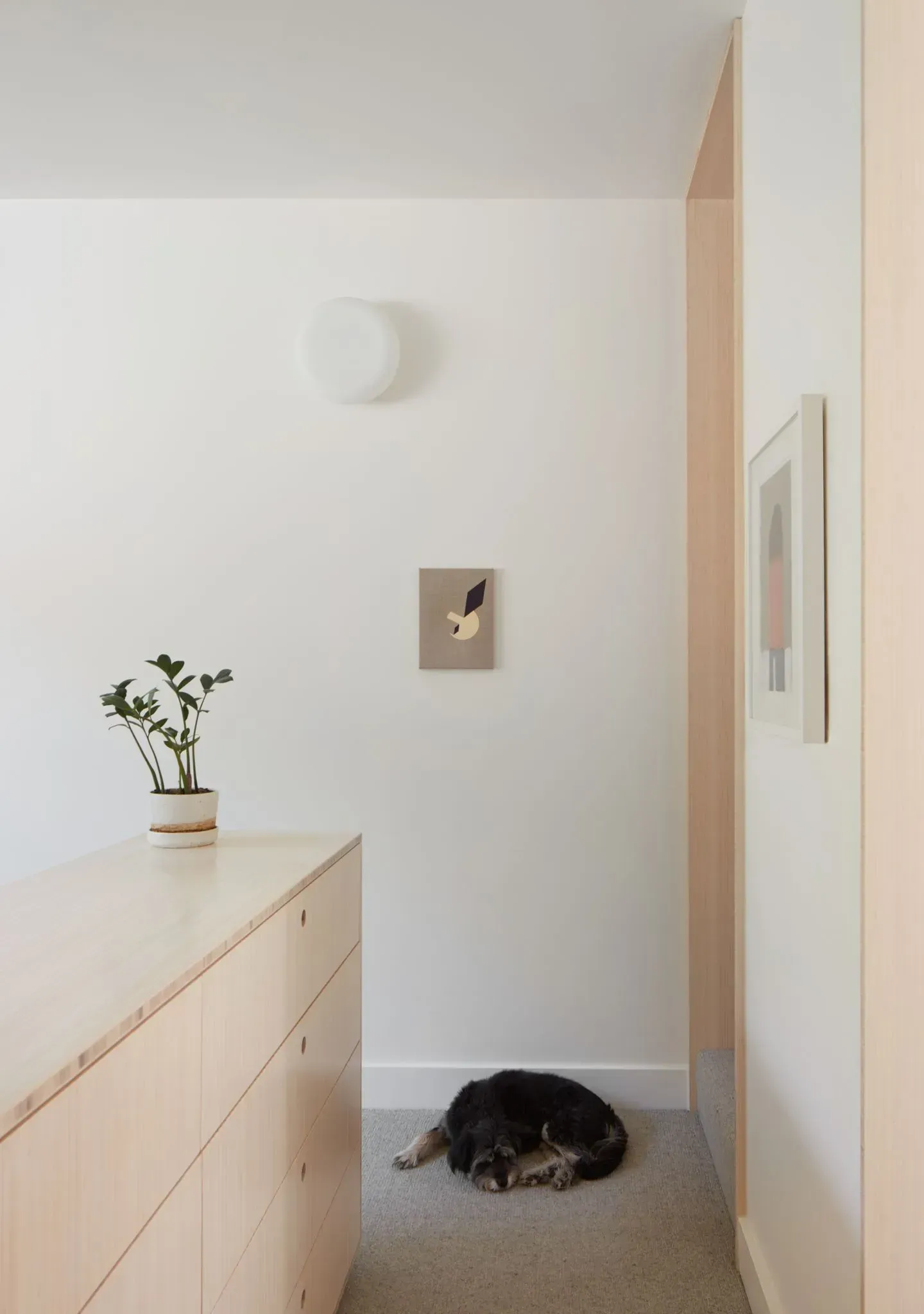
Foomann's attention to detail is evident at the entry level, where new wood-wool panels are integrated among the existing timber beams, providing acoustic attenuation between levels. Steel joinery is used to conceal lighting. The sunken kitchen and dining room, now consolidated into one space, is grounded with new bluestone floors and a large custom table by long-time collaborator Kyran Starcevich. The split second-level contains two bedrooms and a bathroom, with the new split third-level containing the main bedroom, bathroom, and a rooftop deck with an outdoor bath.
The new story is clad in thermally modified timber finished with a protective coating that accelerates the silvering process, creating an enigmatic and minimalist look. The minimalistic form and detailing conceal the complexity of the stepped addition as well as solar panels and other equipment.
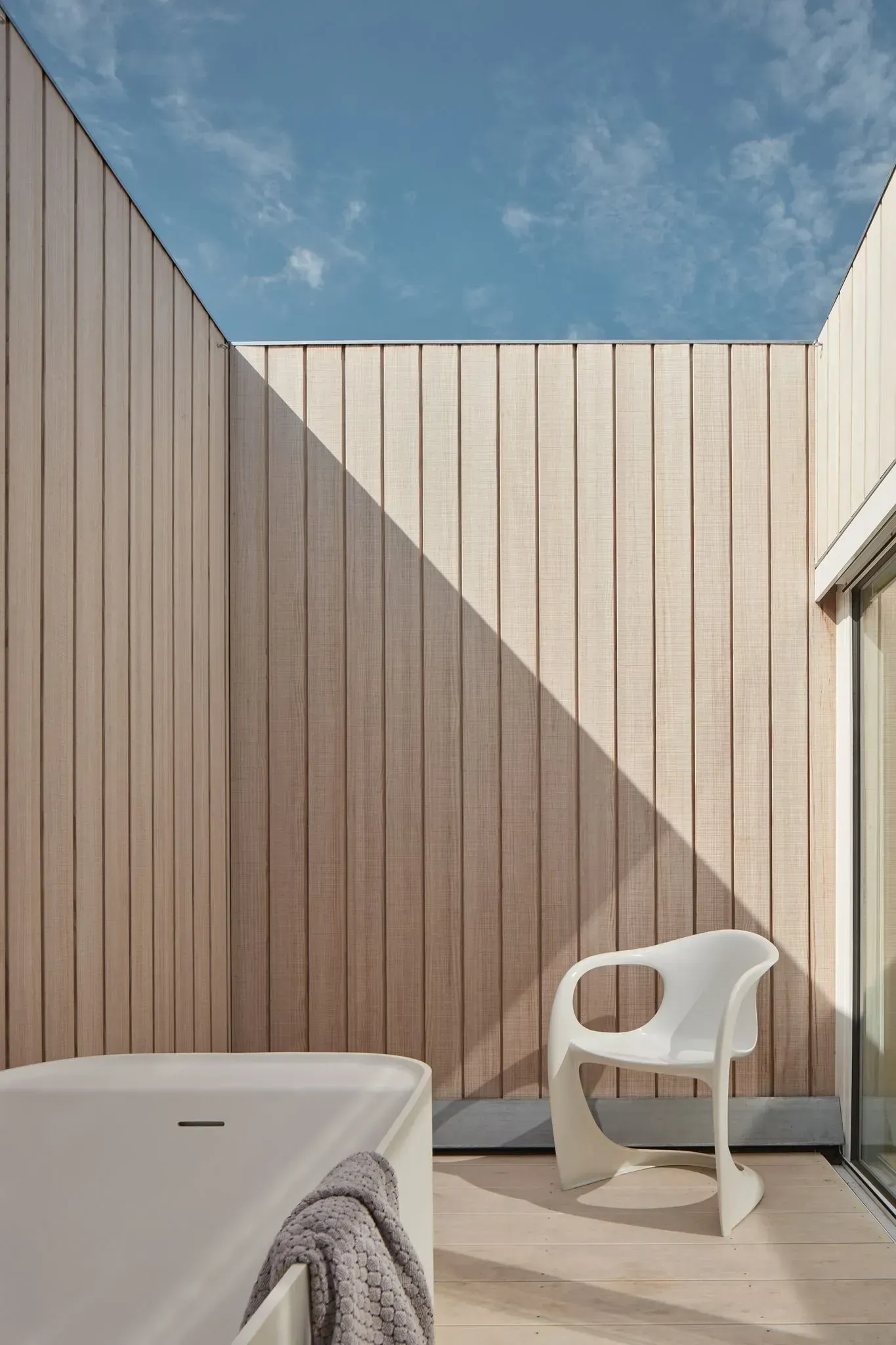
The rooftop deck faces the street but is a private space open to the sky and stars, creating a surprise for visitors.
The project is also assessed as carbon neutral by Pangolin Associates, emissions from embodied energy (materials, products and construction) have been fully offset, and the projected emissions through the use of the home (full life cycle) is forecast to be more than offset by the solar array.
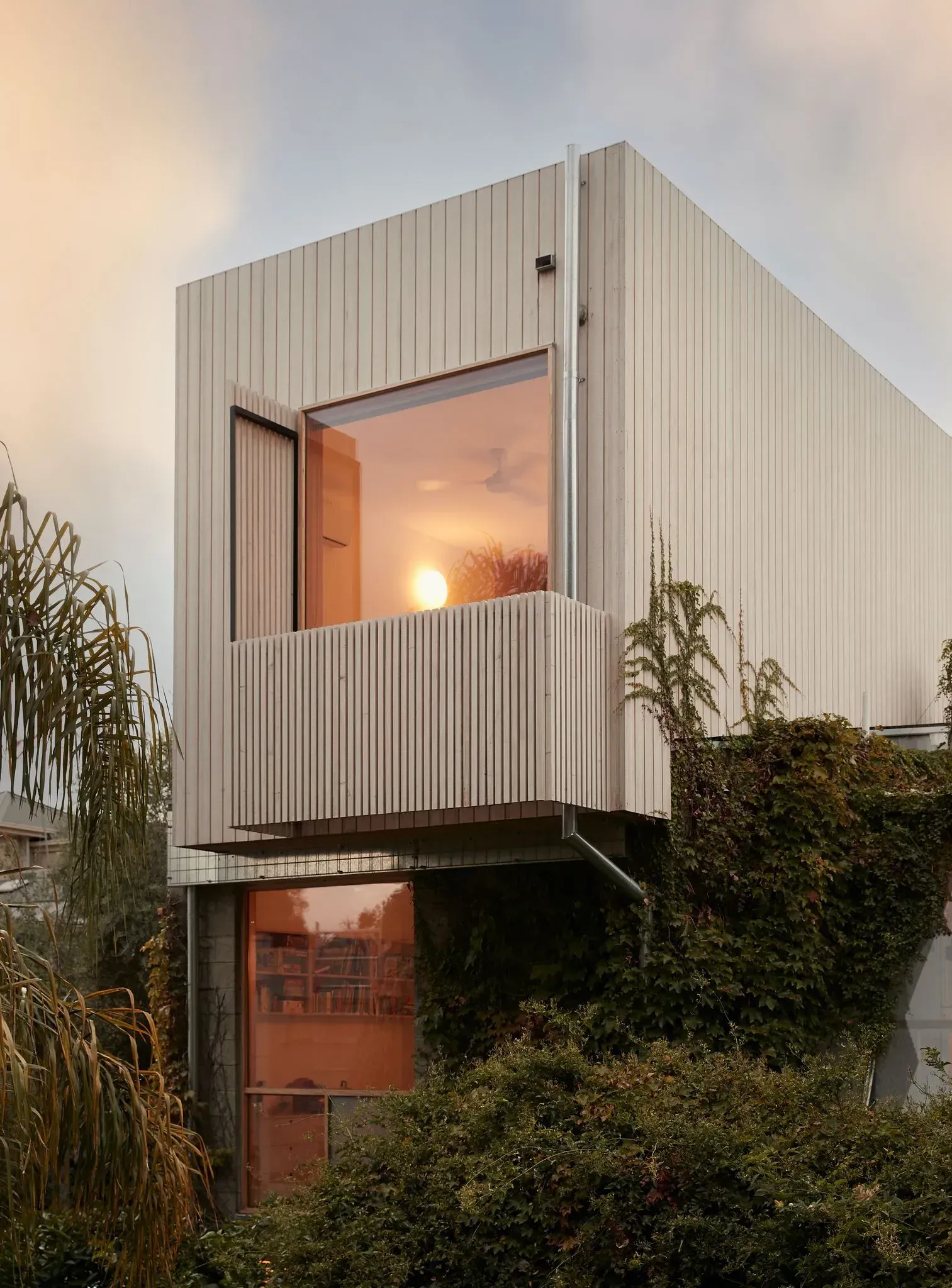
The compact scale of Haines and particularly the new bedroom, bathroom and deck is an asset through attention to proportion and orientation. Light-filled, airy, and functional, these spaces feel better to occupy as a result of being designed at a size to suit their purpose. This renovation project exemplifies Foomann's ability to create innovative, sustainable and livable spaces, while preserving the essence of the past.








